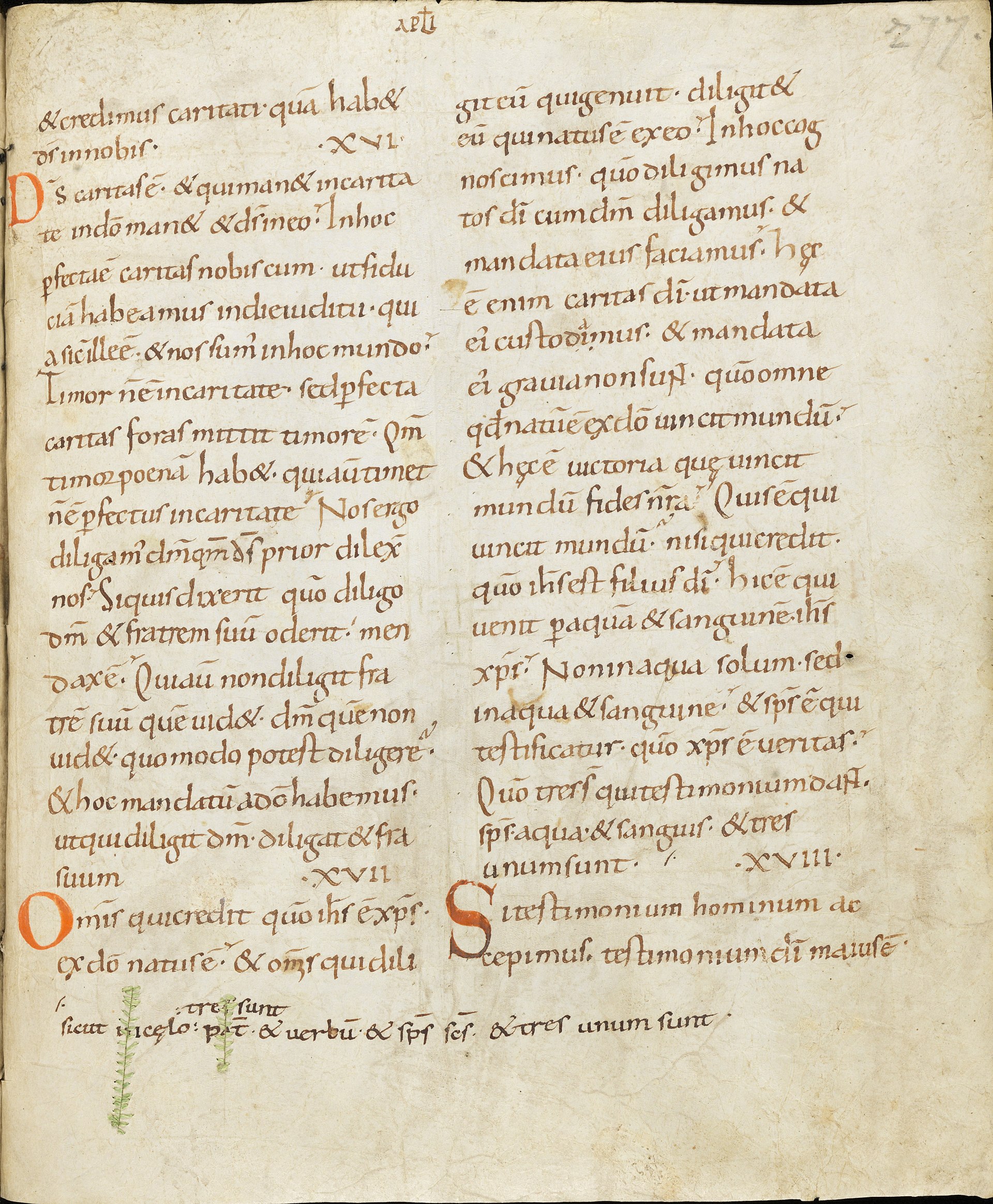Latin paleography 101
You’ve been studying Latin for a while and have a pretty good grasp of the basic grammar. In your Latin textbook, you’ve been reading and translating the easier passages of Julius Caesar, or more difficult Cicero, and learning to parse poetry from Vergil, Ovid, and Horace. But it’s starting to seem a bit artificial, like a game where the stakes are low. Maybe, you want the adventure of being a scholar, of reading something rare, something that most people have never read. If that’s you, you’re ready to try Latin paleography, that is reading from an actual manuscript.
For your first steps in paleography, I’ve taken a passage from the Vulgate Bible – 1 John 4:17-5:10 – in easy Latin with vocabulary that should be relatively familiar. The manuscript, from the monastery of St. Gall in Switzerland, was written in the 9th century in a very clear Carolingian minuscule. Because Carolingian minuscule is the type of script upon which our modern handwriting is based, most of the letter forms should be easily reconizable with only a few exceptions: the occasional round “r” which looks like a “2,” the long “s” which looks like an “f” without the cross bar, and perhaps the uncial “d” whose ascender flops over to the left.
You will face two challenges. The first is the fact that many of the words run together without spaces in between them. This is called “aerated text” as distinct from the earlier scriptura continua in which there are no spaces between words. The second challenge is the abbreviations for which I have included a crib sheet below, and especially the nomina sacra that are highly abbreviated. Treat these as suggestions, not as a rigid system, as the scribe often changes and improvises his abbreviation. My transcription comes at the end of this post.

Text
 Codex Sangallensis, folio 277r
Codex Sangallensis, folio 277r
Transcription

I will post several more exercises in the following months, so check back!
